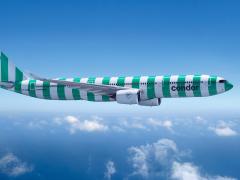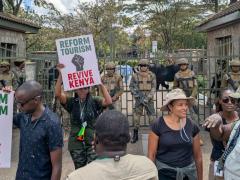Eco-tourism players are moving early to explore partnership opportunities in Angola as the government’s concerted tourism and investment promotion efforts start to pay off.
Natural Selection Co-Founder Colin Bell confirmed that the company has submitted an application to establish a 250 000 hectare private game reserve in the country’s south-east.
“Our ultimate aim is to create the country’s first Big Five reserve. The successful concession models that have been established in Botswana could be replicated in Angola.”
Bell said that the Cuatir Nature Reserve – established as Angola’s first private reserve in 2012 by Unchartered Safaris Angola Founder Stefan van Wyk – has been a pioneering development that could be expanded.
“Elephants were introduced here from Namibia in 2024 and there is not only significant potential for eco-tourism in this region but also critical conservation importance,” Bell said, stressing the need for protection of the rivers flowing into the Okavango Delta.
“Our overarching aim – in line with Natural Selection’s philosophy – for developing tourism facilities in Angola would be for conservation purposes. The government’s renewed commitment to tourism is encouraging as the vital need to protect water sources and other natural features from the effects of human activities cannot be overemphasised,” said Bell.
Angola’s tourism drive
Partnering with outside investors and bodies such as UN Tourism, the country aims to invest US$3 billion in tourism-enabling infrastructure by 2027. This has been paired with significant emphasis on global destination marketing campaigns, ranging from the facilitation of fam trips from the DACH market to a partnership agreement as the “host country” of ITB Berlin 2026 in March.
The Ministry of Tourism’s marketing partnership with the Kleber Group led to the hosting of several fam trips for major DACH operators in 2025.
“Angola really surprised me and in a positive way,” said Frank Heller, Product Manager of German-based operator Geoplan.
“Like many Europeans, I associate the name with a vague image of a war-torn past and a socialist experiment. Luanda is a modern, functioning African city with a waterfront promenade and a marina, and the people I met were authentic. The landscapes were breathtaking, undiscovered and lonely.”
Of the 11 tour operators hosted on the first fam trip in June, eight prepared an Angolan product, series or enlargement of their existing portfolios, according to Kleber Group CEO Julia Kleber.
“Awareness and appreciation for Angola is growing and this is a great indication that, with further investment, tourism can become a major economic contributor,” said Kleber.
Poised for eco-tourism investment
Conservationists and eco-tourism investors pointed out that attractions such as the Angolan Highlands Water Tower – home to lakes that supply 95% of the water flowing into the Okavango Delta – Kalandula Falls and unspoilt wilderness areas, such as the private Cuatir Nature Reserve and the coastal Iona National Park, show Angola presents rich potential for low-density tourism development.
“We support Angola as an emerging tourism destination because we believe the country has significant potential for the global tourism market. Angola is safe and highly diverse – not only in terms of landscape but also culturally and boasts many different habitats,” said Ruth Westrick, Tourism and Commercial Manager for Iona National Park, which is operated through a co-management agreement with African Parks.
In Iona, African Parks has initially focused on reintroducing wildlife (Angolan giraffes were translocated from Namibia in 2023 and 2024) and community development projects.
“Animal numbers are slowly increasing, evidenced in populations of oryx and springbok, and both species appear to be much more relaxed when approached by vehicles.”
Westrick said experiences currently on offer include guided 4x4 tours, cultural visits, nature walks, camping under the stars and exploring the diverse geology in remote landscapes.
“We have not been approached so far by investors but believe that interest will increase with the current public exposure and efforts the government is putting into promoting tourism and the country overall.”
Air access challenges
Enhanced destination marketing has come with new infrastructure developments such as the construction of the Dr Antonio Agostinho Neto International Airport – designed to process 15 million passengers annually.
While officially inaugurated in 2023, passenger services have been slow to take off.
“The development of the airport has been challenging, mainly because supporting infrastructure such as hotels is missing,” Kleber said.
After several delays, national carrier TAAG shifted its domestic and international flight operations to the new airport in October.
“It will take some time for other carriers such as Lufthansa to shift their flights because of inadequate staffing at the airport and the issue with lack of adequate hotels, particularly for crew,” said Kleber.













